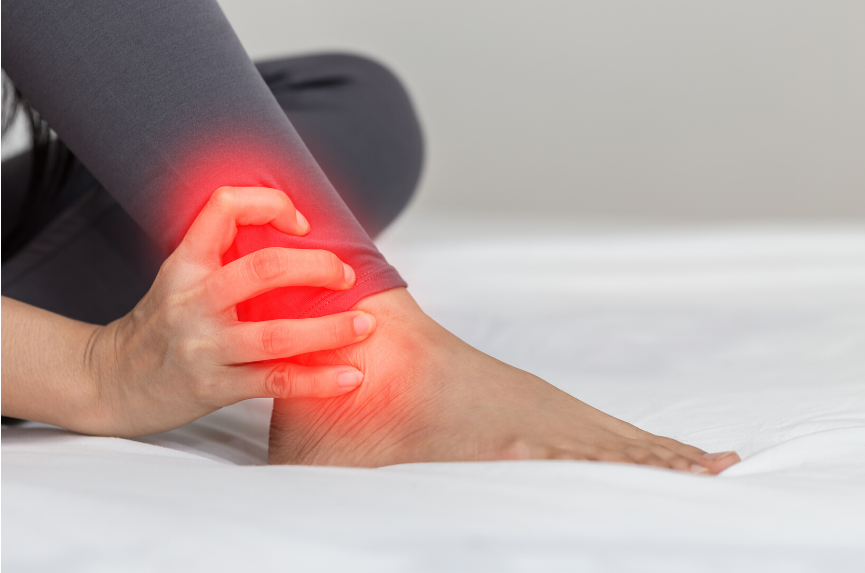What is Syndesmosis injury?

A Syndesmosis injury of the ankle involves tearing of the ligaments between the ends of the Tibia and Fibula (lower leg bones). These ligaments provide stability to the ankle joint, maintaining the ankle mortise structure. The Mortise is the concave shape that the Tibia and Fibula make to sit over the top of the Talus bone.
The Syndesmosis is comprised of three major ligaments: Anterior Inferior Tibiofibular Ligament (AITFL), Posterior Inferior Tibiofibular Ligament (PITFL), and the Interosseous Ligament/Membrane. The AITFL and PITFL are considered the primary stabilisers of the Syndesmosis. The Interosseous ligament/membrane stabilises the distal Tibiofibular joint.
Studies indicate that between 1 and 18% of ankle sprains involve injury to the Syndesmosis
How is it injured?
There are 3 proposed mechanisms of injury:
- External rotation of the foot (rolling your foot inwards and ankle outwards)
- Eversion of the Talus within the ankle mortise (twisting your leg over the top of your foot that is planted in the ground)
- Excessive Dorsiflexion (jamming your foot upwards)
The greatest risk of a syndesmosis injury is during sports or activities that involve planting of the foot and changing direction. These include skiing, football, soccer and other turf related sports.
Getting your foot caught under you during a tackle can be a common cause in contact sports. Direct blows to the outside of the leg causing internal rotation of the leg while the foot remains fixed or stuck in the turf in external rotation. Another scenario is a blow to the lateral knee with the foot planted in external rotation as the whole body rotates internally. Other causes can be falls (often from a height), twisting in weight bearing and motor vehicle accidents.
How will a Syndesmosis injury look and feel?
The general presentation of a Syndesmosis injury will have many of the following:
- Pain localised to the lower end of the shin and outside of ankle. Sometimes this pain can extend up the leg if the interosseous membrane is also injured.
- Pain when pointing your foot upwards or if someone else pushing your foot upwards for you.
- Possible heel raise gait pattern – you may not want to put your heel down on the ground when walking.
- Often doesn’t have severe swelling.
How is it diagnosed?
Physiotherapists are trained in many techniques to accurately diagnose a Syndesmosis injury and will be able to recommend the right type of imaging if required. This often includes an x-ray and/or an MRI.
Treatment is most often conservative management (physiotherapy without surgery) and can often involve the use of a moonboot, crutches with weight-bearing restrictions. These injuries occasionally need input from an orthopaedic foot and ankle specialist. Medium and long term management includes strengthening, balance training and strapping where appropriate.
If you think you have suffered from a high ankle sprain and are having issues with your rehabilitation please do not hesitate to ask your Queen Street Physiotherapist about it. We are here to help.



